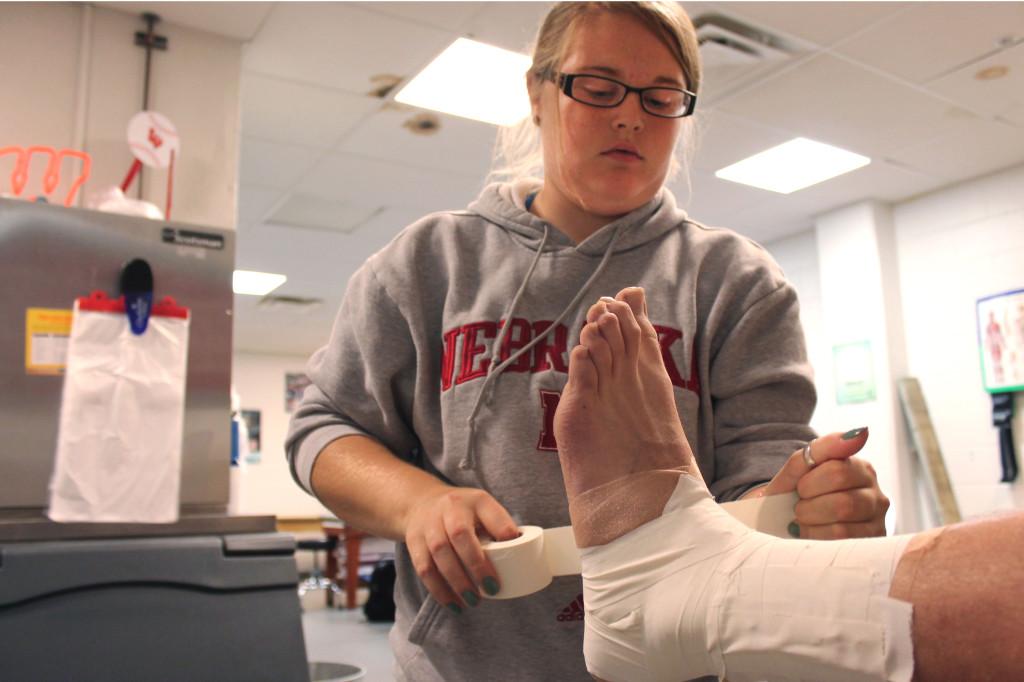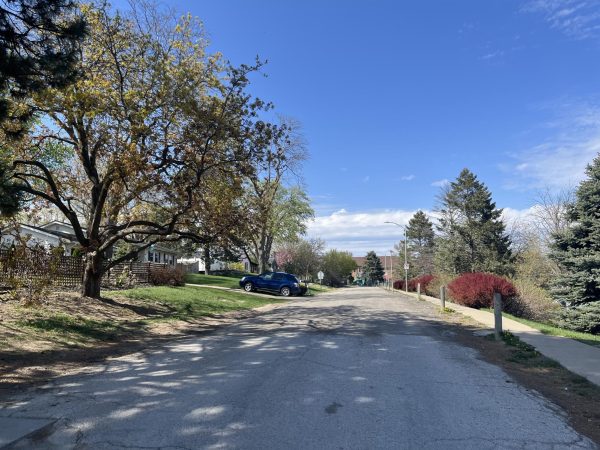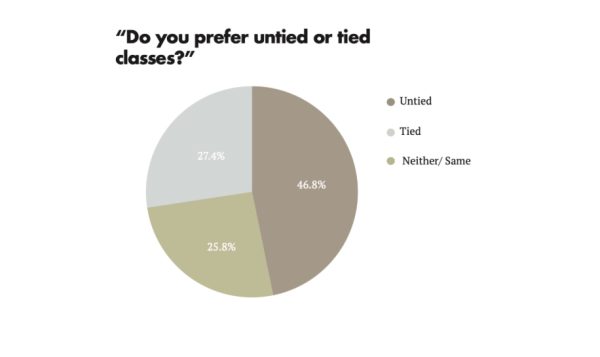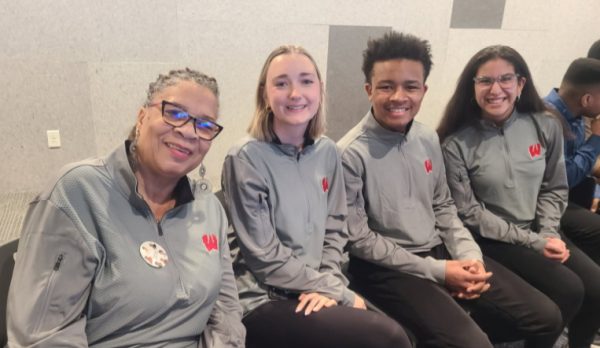Trainers In Training
This article first appeared in issue three of the Lance. Pick up a copy of the issue today.
Their day starts off at 7:30 a.m. They go through the school day, just like any other Westside student, an average of eight classes each.
After school, or just before, they hurry to the trainer’s office right outside the boys’ locker room, fill the coolers, fill the water bottles and wait. Once athletes start to come through the room, the three girls ask them what’s hurting; they ice the injuries, send them to the ice bath, tape them up, or send them to head athletic trainer Shawn Campbell to be assessed. They spend the rest of the afternoon at football practice. This is their daily routine for months.
Seniors Carole Kauffman, Brandy Leaver and Cheyenne Janicek may not be football players, but they spend as much time on football as the athletes do. Along with being at practice every school day, they even spend time at school on the weekends.
“We are [at the high school] from 7 a.m. to 7 p.m. every night and for about five hours every Saturday,” Leaver said. “I am here all the time.”
The activities of a student trainer are time-consuming. The three girls appear at every varsity and junior varsity football game, home and away, along with every other sport’s varsity games and meets.
According to Campbell, student trainers are vitally necessary.
“They are a pretty integral tool for keeping the training room up and running,” Campbell said. “It’s an extra set of hands necessary for getting athletes out to practice or a game on time.”
Each year, Campbell picks a group of two or three students that meet his qualifications, from the Sports Medicine and Health Sciences classes.
“It sort of comes down to the people that have the personality for it,” Campbell said. “I’m looking for somebody that wants to be helpful and ones that could use experience before college.”
Over the summer, Campbell called Leaver, Kauffman and Janicek into the training room to teach them the ropes of being a student trainer.
Being a student trainer includes taping sprained ankles or wrists, giving ice and carrying out supervised rehab after the injury subsides. Besides taping and assigning exercises to athletes, the trainers get to see many types of injuries.
“There are a lot of minor injuries like turf burns and hurt ankles or wrists,” Leaver said. “The training room is always full, especially during football season.”
Out of the numerous injuries the trainers treat, Kauffman said her favorites are ones she doesn’t normally get to see, like a dislocated finger.
Although major injuries aren’t as common as minor injuries, treating them is still part of the trainers’ job description.
“Concussions are very interesting to me,” Leaver said. “Even though you can’t really see much with a concussion, it’s interesting to know what’s going on in the brain.”
Leaver and Kauffman find the job to be relatively simple, but there can be some difficult aspects to it.
“It’s definitely difficult separating my personal relationship with the athlete and staying at a professional level,” Kauffman said. “Like if one of your friends gets hurt, you can comfort them to a certain extent, but you really have to hold back any emotions over whatever the injury is and be there to help them.”
Although it is a lot of work, the trainers do enjoy what they do.
“Even though it can be stressful and overwhelming at times. I’ve gotten a lot closer with a bunch of the athletes, which makes it a lot more fun,” Kauffman said.
Your donation will support the student journalists of Omaha Westside High School. Your contribution will allow us to purchase equipment and cover our annual website hosting costs.







